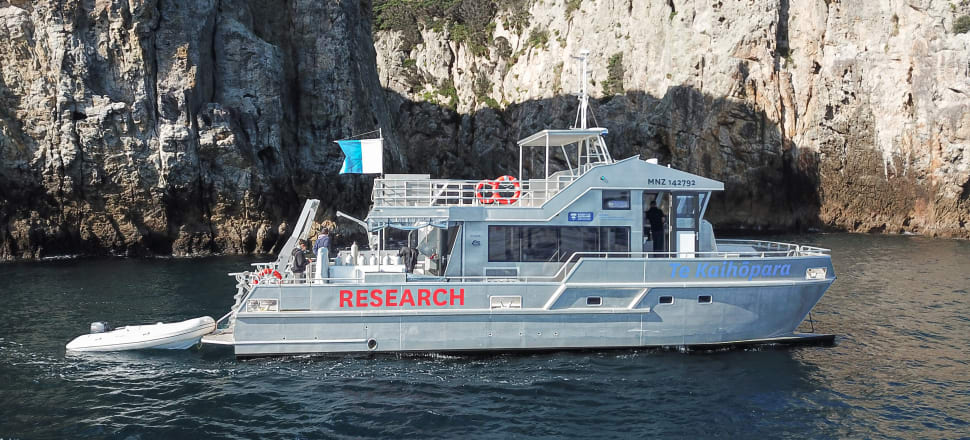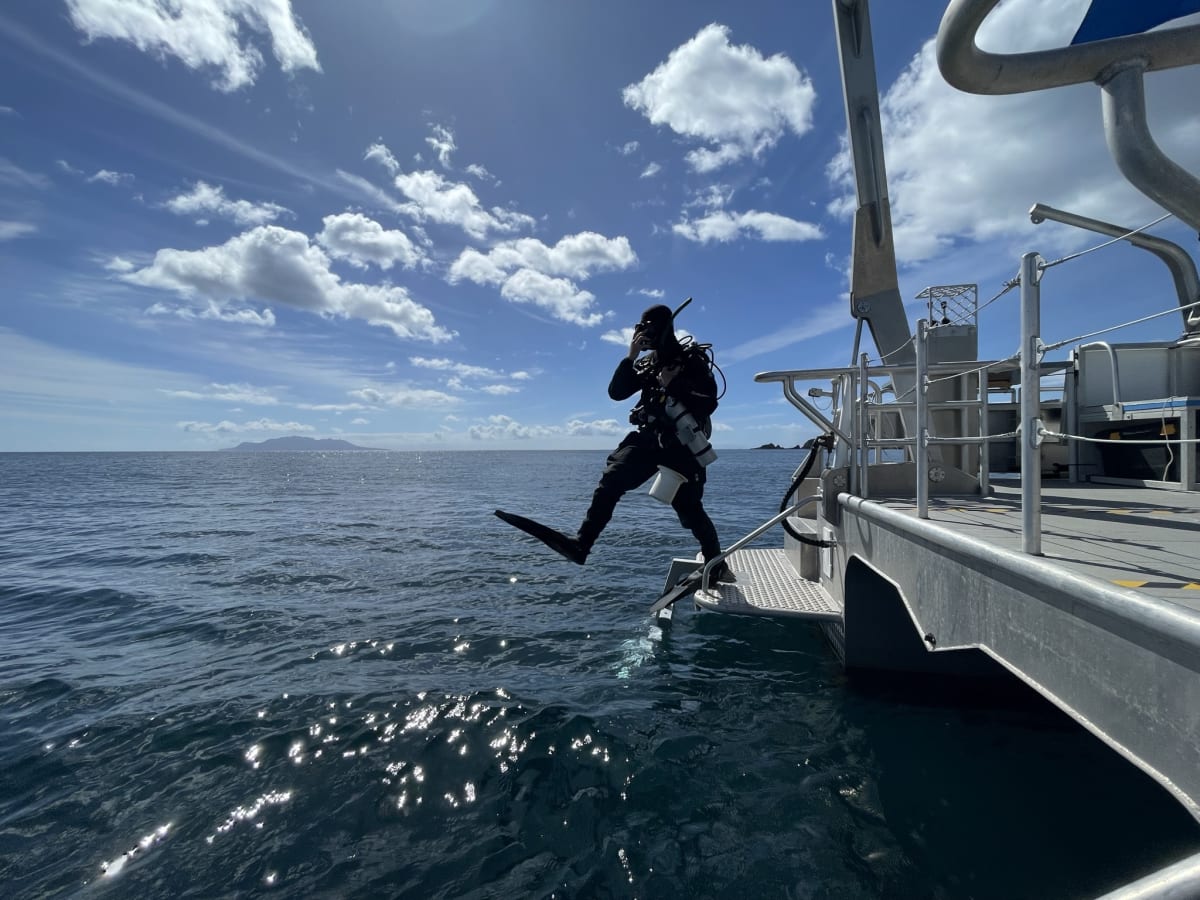
A multi-million-dollar marine research vessel was launched this week by the University of Auckland to be a sentry to the changing seas
There’s a new asset in the fight to save the troubled ecosystems of the Hauraki Gulf, with marine scientists launching a 15.9m ship this week to serve as a moving base as they survey the area and support research projects.
The vessel, given the name Te Kaihōpara or ‘the explorer’ by iwi Ngāti Manuhiri, is owned by the University of Auckland, who funded the $2.7 million-valued ship alongside the help of a philanthropist.
According to the university, the philanthropist is based overseas but with strong connections to New Zealand but did not want her identity made public.
READ MORE: * Gulf residents accuse DOC of slow-walking new reserve * Whales are the canary in the coal mine for the Hauraki Gulf
The ship is capable of carrying 25 people including crew, and replaces the Hawere, a 15m research vessel, which was the former flagship of a fleet of smaller research vessels.
Professor Simon Thrush, the director of the university’s Institute of Marine Science, said the ship will help the institution find solutions for the unstable reality of a Gulf facing pollution, overfishing, micro plastics proliferation and destruction of kina and mussel beds.
“Our marine environment is in need of restoration, especially in the Gulf,” he said. “Te Kaihōpara will enhance our teaching and research, and support the wider push to find solutions to our environmental challenges.”

He said the design of the ship allows for a more functional workspace and almost double the amount of people onboard when compared to the Hawere.
Technology such as remotely operated submarine vehicles and metal tubes that can reach the seafloor to retrieve samples will allow them to expand the scope of their research.
Thrush said that’s ultimately important to the fate of the Gulf itself.
“That’s important as the more we know about the state of the ecosystem, the better we can provide that information to the people that make the decisions,” he said.
Specific projects Te Kaihōpara will support include looking at how noise pollution from boats affect fish, the impact of invasive sea urchins and measuring the feeding habits of whales, dolphins, seabirds and rays.
Two large television screens on board the vessel will broadcast live underwater footage, allowing the scientists to peek at the world beneath without getting wet themselves.
Local iwi Ngāti Manuhiri gifted the name in part due to their connection to mussel reef restoration projects, and its rohe including the Hauraki Gulf, which will form the new territory for the ship.
“Te Kaihōpara will spend much of her life working in Ngāti Manuhiri’s rohe moana and we look forward to working with all iwi to enhance the mauri of the Gulf and all marine environments,” said Thrush.
It’s the newest in a line of research vessels going back decades at the University - although back in the 1960s, the most luxurious craft the institute owned was an aluminium dinghy.

It comes as the Hauraki Gulf comes under the microscope as a vulnerable and important site within the realm of marine conservation.
Being both the habitat for important species and within the spitting distance of New Zealand’s most populous city puts the Gulf on a uniquely precarious ecological precipice.
Despite this, a group trying to get a new marine reserve established off the coast of Waiheke Island are accusing the Department of Conservation of slow-walking the process, effectively putting off much-needed environmental safeguards for the region.
Auckland Councillor Mike Lee, who was co-founder of group Friends of Hauraki, the very same group who drew up the plans for the reserve, said the Gulf’s ecosystem was being “hammered”.
Lee said the new research vessel was exciting news, but didn't bely the need for the marine reserve.
"Auckland University has a proud tradition in marine research going back to Sir Charles Fleming, Prof John Morton and Dr Bill Ballantine who established the marine research institute at Leigh," he said. "But all of these great New Zealand scientists were also passionate conservationists whose later life was dominated by pitched conservation battles on land and sea. They would be the first to tell you as scientists that while research is invaluable it will not protect nature in itself. Which is why both Morton and Ballantine especially were passionate advocates for marine reserves. We all need to follow their example."
Te Kaihōpara was built by Whanganui-based Q-West Boat Builders Ltd, and will be moored in Whangateau Harbour north of Auckland, not far from the University of Auckland’s marine science base in Leigh.
Leigh Marine Laboratory first opened in 1964. Early documentation of the university fleet reveals humble beginnings: a photo in the New Zealand Women's Weekly in 1965 showed famed marine biologist Dr Bill Ballantine and J.B. Gilpin-Brown using a plastic tub to scoop plankton samples from a small dinghy.







